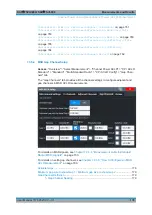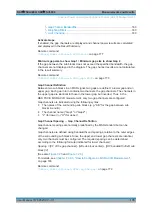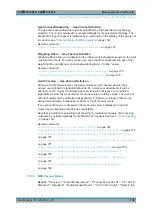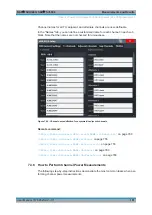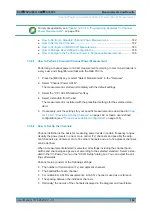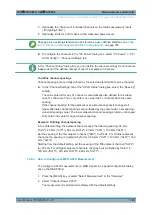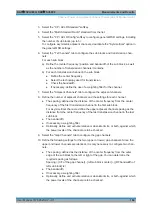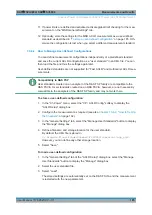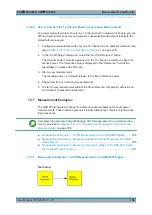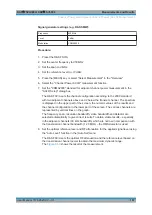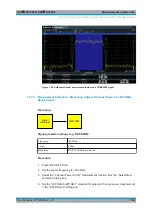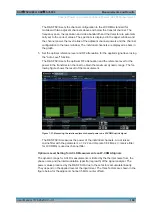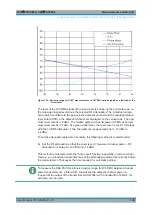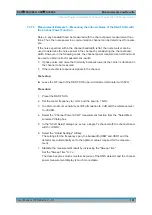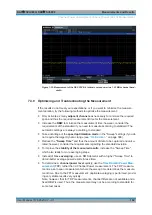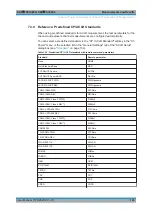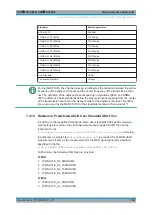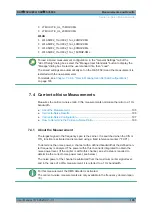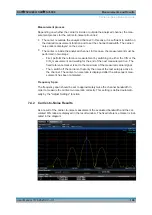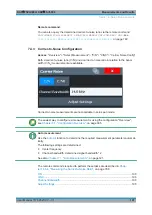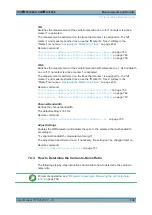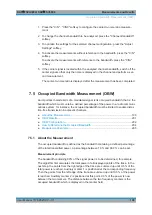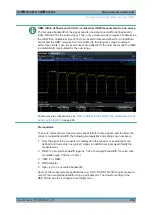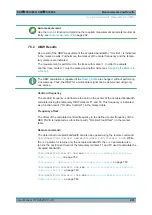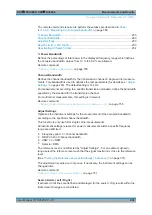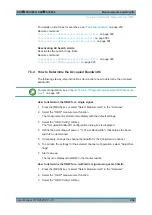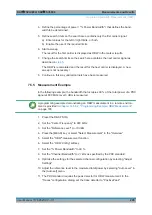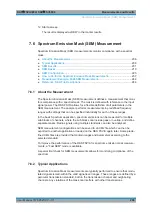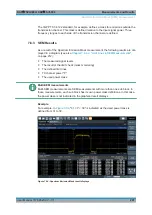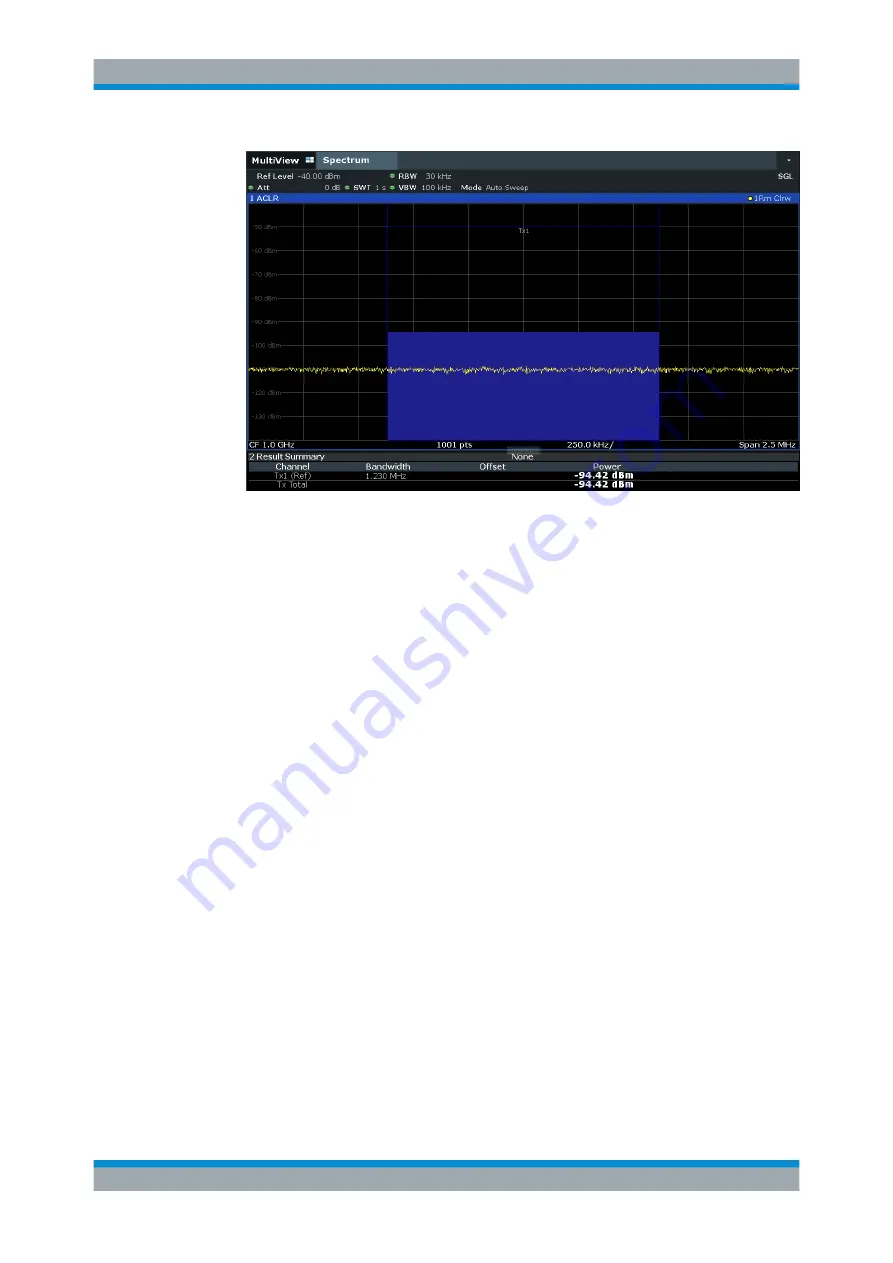
Measurements and Results
R&S
®
FSVA3000/ R&S
®
FSV3000
192
User Manual 1178.8520.02 ─ 01
Figure 7-33: Measurement of the R&S
FSV/A's intrinsic noise power in a 1.23 MHz channel band-
width.
7.3.8
Optimizing and Troubleshooting the Measurement
If the results do not meet your expectations, or if you want to minimize the measure-
ment duration, try the following methods to optimize the measurement:
●
Only activate as many
adjacent channels
as necessary to minimize the required
span and thus the required measurement time for the measurement.
●
Increase the
RBW
to minimize the measurement time; however, consider the
requirements of the standard if you need to measure according to standard! The
automatic settings are always according to standard.
●
Take advantage of the
speed optimization mode
in the "Sweep" settings if you do
not require the larger dynamic range (see
●
Reduce the
"Sweep Time"
and thus the amount of data to be captured and calcu-
lated; however, consider the requirements regarding the standard deviation.
●
To improve the
stability of the measured results
, increase the "Sweep Time" ,
which also leads to more averaging steps.
●
Instead of
trace averaging
, use an RMS detector with a higher "Sweep Time" to
obtain better average power results in less time.
●
To determine a
channel power level
quickly, use the
(TDP) rather than a Channel Power measurement. The TDP measure-
ment is a zero span measurement where the sweep time determines the measure-
ment time. Due to the FFT measurement, duplicate averaging is performed, provid-
ing very stable results very quickly.
Note, however, that for TDP measurements, channel filters are not available and a
fixed RBW is used. Thus, the measurement may not be according to standard for
some test cases.
Channel Power and Adjacent-Channel Power (ACLR) Measurement

